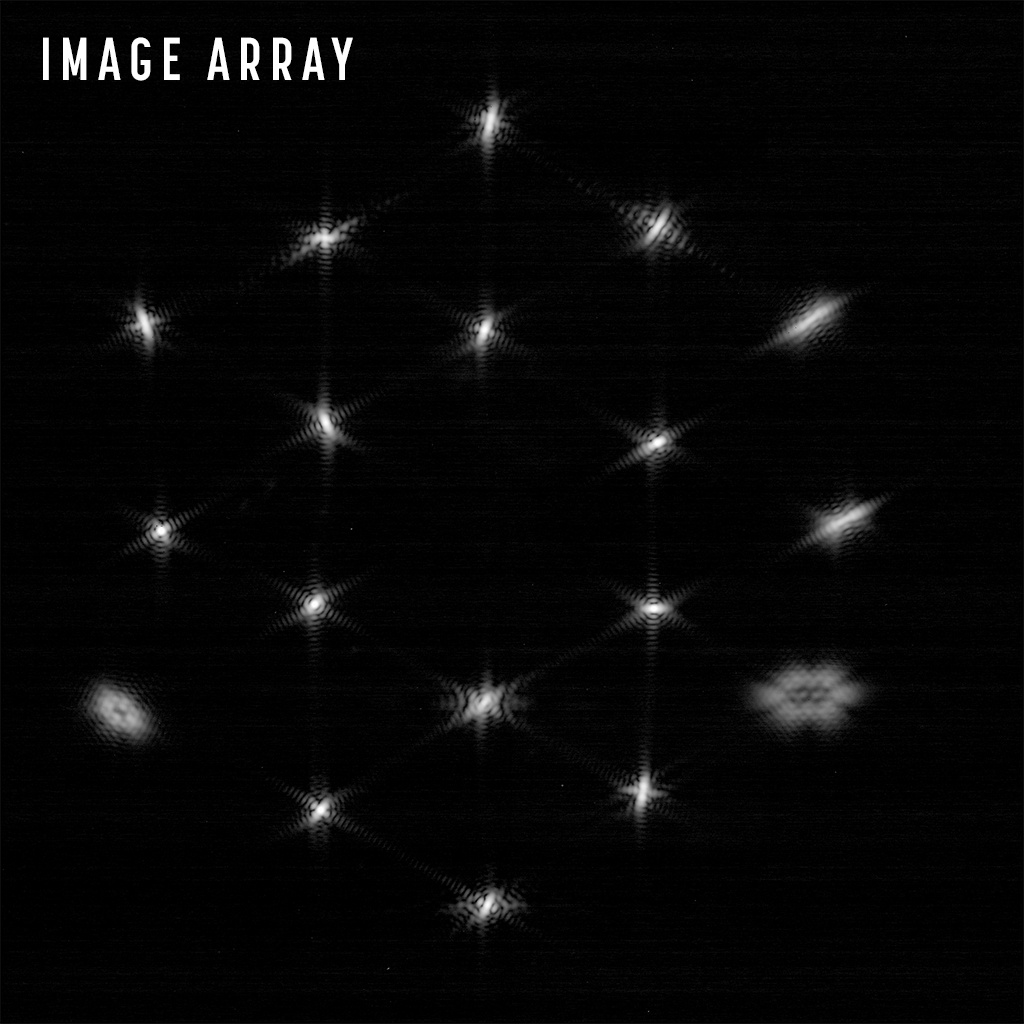Engineers for the James Webb Space Telescope are in the midst of an intricate, three-month-long process of aligning the telescope’s 18 separate mirror segments to work together as one giant, high-precision 6.5-meter (21.3-foot) primary telescope mirror.
This process, called phasing, began in early February and includes seven different steps, which goes from taking the mirrors’ initial placements after they were deployed to doing a “coarse” and then “fine” alignment, and then making sure the mirror works with all four of Webb’s instruments and their various fields of view.
As of this week, engineers are just on step number two, an indication of how precise and detailed this procedure is. And while Webb teams have tested and simulated the process countless times here on Earth, they’ve never been able to perform the entire process under all of the in-space conditions the telescope is now experiencing. Engineers can simulate the cold and vacuum of space here on Earth, but they can’t simulate zero G.

“We built a testbed telescope, which looks a lot like Webb but is 1/6th the size,” explained Lee Feinberg, the Optical Telescope Element Manager for the mission, in an interview last month, “and we proved we knew how to move the mirrors to align them. Then we tested the full telescope in the vacuum chamber at Johnson Space Center at temperature and pressure. There, we were able to demonstrate aspects of the process, but not the whole thing. So, the first full time we’re doing the entire process is when the telescope is in space.”
On February 12, the telescope team announced the first photons of starlight had traveled through the entire telescope and were detected by the Near Infrared Camera (NIRCam) instrument. NIRCam is being used to align the mirrors and calibrate the telescope, and it took 18 out-of-focus images of one star, one picture from each mirror segment. Now, scientists and engineers have taken these unfocused images and are using them to slowly fine-tune the telescope. The team says that so far, the initial results match expectations and simulations.
“I like to think of it as, that we have 18 mirrors that are right now, little prima donnas, all doing their own thing, singing their own tune in whatever key they’re in,” said Jane Rigby, Webb operations project scientist, during a press briefing earlier this month. “We have to make them work like a chorus, and that is a methodical, laborious process.”
The telescope’s 18 primary mirror segments need to match each other to a fraction of a wavelength of light – approximately 50 nanometers. Each segment has six actuators or tiny mechanical motors attached to the back that can align the segments, along with an additional actuator at the center of each segment that adjusts its curvature.
The first stage in this process, called “Segment Image Identification” had the team move each of Webb’s 18 primary mirror segments to bring 18 unfocused copies of a single star into a planned hexagonal formation. The lead image, above, shows that alignment. The first movements of the mirror segments can be as small as a centimeter or less, the final movements will be tens of nanometers, which is only one-ten thousandth the width of a human hair.
The remaining steps:
2. Segment Alignment: A process called Phase Retrieval uses mathematical analysis to determine the precise positioning errors of the segments. Adjustments of the segments then result in 18 well-corrected “telescopes.” However, at his current stage, the segments still don’t work together as a single mirror.

3. Image Stacking: The images from each segment image are stacked on top of one another. Then the individual segment images are moved so that they fall precisely at the center of the field to produce one unified image. This puts all the light in one place on the detector.

4. Coarse Phasing: At this point, the segments are still acting as 18 small telescopes rather than one big one. Coarse Phasing being the process of lining the segments up with each other with an accuracy smaller than the wavelength of the light. Using a technology known as Dispersed Fringe Sensing, NIRCam will capture light spectra from 20 separate pairings of mirror segments. This will be performed at least three times.
5. Fine Phasing: After each round of Coarse Phasing, engineers will do Fine Phasing, where they measure and correct the remaining alignment errors using the same defocusing method applied during step 2, Segment Alignment. However, instead of using the secondary mirror, they’ll use special optical elements inside the science instrument which introduce varying amounts of defocus for each image.

6. Telescope Alignment Over Instrument Fields of View: This takes the alignment from NIRCam in Fine Phasing to making sure alignment works for the rest of the instruments. Engineers will take measurements at various fields of view and make corrections to achieve a well-aligned telescope across all science instruments.

7. Iterate Alignment for Final Correction: This step removes any small, residual positioning errors in the primary mirror segments, and checks the image quality across each of the science instruments.
“As we go through the seven steps, we may find that we need to iterate earlier steps as well,” the team wrote on their blog. “The process is flexible and modular to allow for iteration. After roughly three months of aligning the telescope, we will be ready to proceed to commissioning the instruments.”
None of the images taken during the alignment procedures will be the “pretty” images we’re used to seeing from other space telescopes. Expect to see the true first light images from the fully function JWST by June or early July.
Lead image caption: This early Webb alignment image, with dots of starlight arranged in a pattern similar to the honeycomb shape of the primary mirror, is called an “image array.” Credit: NASA/STScI/J. DePasquale

